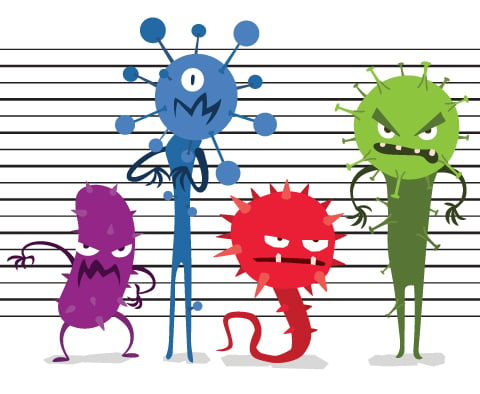Candida Auris Infections
Candida auris is a yeast or fungus that can enter the bloodstream and spread throughout your body, causing serious infections and even death. It is considered an emerging global health threat. Candida auris is often resistant to several antifungal drugs commonly used to treat other types of Candida infections. Most Candida auris infections can be treated with a type of antifungal drug called echinocandin, although some strains are resistant to all three available classes of antifungal medicines.
Candida auris is transmitted from person to person. You can carry Candida auris somewhere on your body but not have an infection yourself or have any symptoms. This is called colonization. Candida auris also can spread through contact with contaminated surfaces and can remain on surfaces for weeks to months. Studies show that Candida auris has been found inside and outside the rooms of patients in hospitals or nursing homes.
Patients who have been hospitalized or in a healthcare facility for a long time are particularly susceptible to a Candida auris infection. Patients who have a catheter, breathing or feeding tube, or other tube attached to veins in their body or have previously received antibiotics or antifungal medications appear to be at highest risk.
More than one in three patients die within a month of being diagnosed with a bloodstream or other invasive Candida auris infection. It is important to identify Candida auris as rapidly as possible and take precautions to stop its spread.
Symptoms of a Candida Auris Infection
It can be difficult to know if you have a Candida auris infection. People who get invasive Candida infections often already have other medical conditions. The most common symptoms are fever and chills that don’t improve after treatment with antibiotics.
MicroGenDX Test Used in Diagnosing Candida Auris Infections
Only a laboratory test can diagnose a Candida auris infection.
An evaluation and culture (growing microbes from your sample in a lab) are often used to diagnose infections. However, standard cultures might come back negative even when you actually do have an infection, and that means your infection won’t be treated. In addition, culturing Candida auris can take weeks. Instead of relying on culture, a MicroGenDX test detects the DNA of the Candida auris microbes in your sample along with how much of the microbe is present. MicroGenDX then uses that information to determine the drugs that can best treat the infection.
You can order the MicroGenDX Candida Auris test and get complete instructions here: https://microgendx.com/product/candida-auris/
Providing a Sample for the Candida Auris Test
Getting a good sample is important in the diagnosis of Candida auris infections. To collect a sample, your doctor will take a swab from the lymph nodes in your armpits (bilateral axilla) and groin. Your doctor might also take a urine and tissue samples.
Your doctor will roll the swab over the entire surface of the area to be tested, applying pressure as the swab moves across the skin. As much material as possible needs to be gathered on the swab to ensure a conclusive sample. Then the swab will be inserted into the specimen tube, which will be sealed tightly.
Everything you need to know about how samples for the Candida auris test are taken is included with the Candida auris test and is also available online on the product page. The instructions included with your test contain illustrations that will help you to help your doctor collect a sample without contaminating it. It is always important to obtain a proper sample by following the instructions for collecting the sample, as well as when packaging and shipping it. For example, with either method, be sure not to contaminate the sample by touching it with your hands. For best results, you must be off all antibiotics for two days before the sample is collected. However, if this is not possible, the test can still be run.
Medical Specialties Treating Candida Auris Infections
A primary care physician is the first contact for treatment; an infectious disease expert should be consulted for advanced care.
How Candida Auris Infections Are Treated
Accurate diagnosis of a Candida auris infection is important to determine the best treatment method. Traditional culture-based as well as molecular methods are used to detect pathogens.
It is important to know that not all antifungal drugs work for all fungus, and some even work differently in different areas of the body. Your doctor should consult the “antimicrobials for consideration” chart on your MicroGenDX report to decide which treatment is right for you.
It is also important to complete the full course of medication as it is prescribed, even when symptoms begin to clear up before you are treated.

